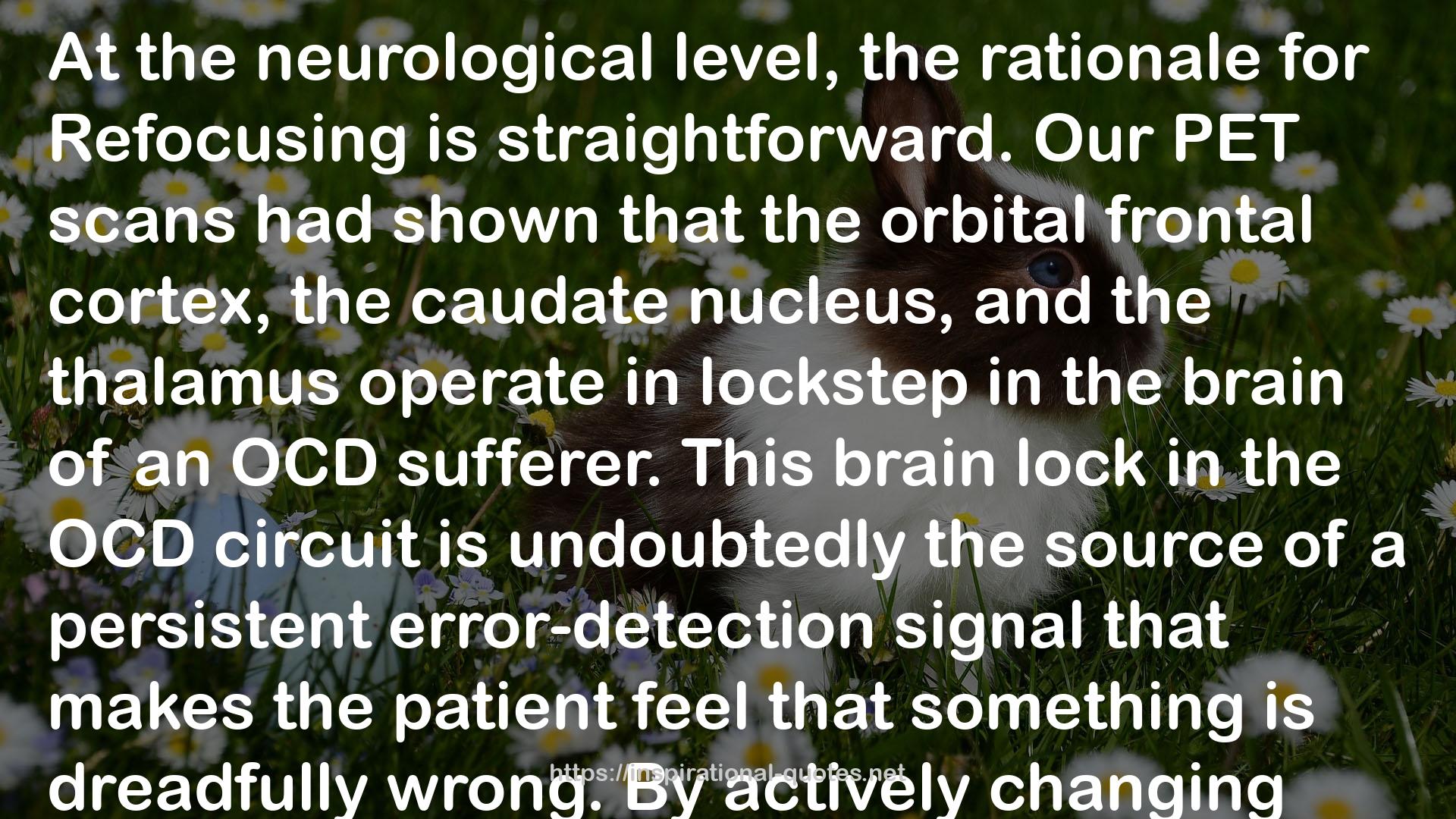" At the neurological level, the rationale for Refocusing is straightforward. Our PET scans had shown that the orbital frontal cortex, the caudate nucleus, and the thalamus operate in lockstep in the brain of an OCD sufferer. This brain lock in the OCD circuit is undoubtedly the source of a persistent error-detection signal that makes the patient feel that something is dreadfully wrong. By actively changing behaviors, Refocusing changes which brain circuits become activated, and thus also changes the gating through the striatum. The striatum has two output pathways, as noted earlier: direct and indirect. The direct pathway tends to activate the thalamus, increasing cortical activity. The indirect pathway inhibits cortical activity. Refocusing, I hoped, would change the balance of gating through the striatum so that the indirect, inhibitory pathway would become more traveled, and the direct, excitatory pathway would lose traffic. The result would be to damp down activity in this OCD circuit. "
― Jeffrey M. Schwartz , The Mind and the Brain: Neuroplasticity and the Power of Mental Force
